| Please note: The
Standards of Care set forth in ATCP 16 apply only to those required to be
licensed under Act 90 and NOT to pet or privately owned animals. (See
Who Needs a
License? for further information.)
|
 Act 90, 173.41(10)
Standards of Care Act 90, 173.41(10)
Standards of Care  Food and
Water Food and
Water  Animal
Health and Veterinary Care Animal
Health and Veterinary Care 
 Housing and
Transportation Housing and
Transportation  Exercise Exercise 
 Dog Grouping and
Separation Dog Grouping and
Separation  Behavior and
Socialization Behavior and
Socialization 
|
| |
 Act 90 Standards of Care Act 90 Standards of Care
 173.41(10)
Standards of Care. A person who is required to be licensed under sub. (2) shall
do all of the following with respect to each dog kept by the person: 173.41(10)
Standards of Care. A person who is required to be licensed under sub. (2) shall
do all of the following with respect to each dog kept by the person:
(a)
Provide sufficient food to maintain the dog in good health.
(b)
Provide sufficient water to maintain the dog in good health. If fresh water is
not available to the dog at all times, the person shall provide fresh water
daily and in sufficient quantity for the health of the dog.
(c) Ensure
that necessary and standard veterinary care is provided in a timely manner
(d) Ensure
that the dog is not kept in an enclosure unless all of the following apply:
- The enclosure is of an appropriate size, as determined by the
department, based on the size, age, and number of dogs kept in the enclosure
and the length of time the dog is kept in the enclosure.
- The enclosure is structurally sound and maintained in good repair to
protect the dog from injury.
- If wire flooring is used, it is coated, is of a sufficient gauge to
ensure that it will not cause injury to the dog, and is used only in the manner
specified by the department.
- The enclosure is maintained in a clean and sanitary condition.
(e) Ensure
that the dog is not kept in an enclosure for a period that the department
determines to be excessive, considering the size of the enclosure and any other
factors that the department considers relevant.
(f) Ensure
that the dog is kept outdoors only if all of the following apply:
- The dog is of a breed or type that is typically kept outdoors.
- The dog is acclimated to the outdoors.
- The person provides adequate shelter from the sun and inclement
weather.
(g) Ensure
that all facilities in which the person keeps the dog have adequate lighting
and ventilation and that a proper temperature is maintained for the dog,
considering its type or breed.
(h) Ensure
that the dog is provided adequate daily access to exercise, as determined by
the department.
(i) Ensure
that the dog is observed every day by the caretaker of the premises at which
the person operates or an individual under the direct supervision of the
caretaker to monitor the health and temperament of the dog and to provide care
to the dog as needed.
 2009 WISCONSIN ACT 90 (pdf) 2009 WISCONSIN ACT 90 (pdf) 
|
| |
Top
|
| |
 Dog Care, General: Food and Water Dog Care, General: Food and Water
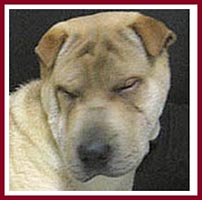 Each dog must
be fed at least once a day, unless another schedule is needed to maintain or
restore the dog’s health. Each dog must
be fed at least once a day, unless another schedule is needed to maintain or
restore the dog’s health.
The size and nutritional content of a dog’s daily
food ration must be based on dog’s age, condition, size and weight.
Dog food must be wholesome, uncontaminated and
palatable. Dog food must be stored in a manner that keeps it wholesome,
uncontaminated and palatable. Food storage containers must be clean.
An adequate quantity of fresh water must be made
available to each dog at all times, or as often each day as is necessary to
keep the dog well-hydrated at all times. Water must be fluid, potable and
uncontaminated.
Fresh water available at all times, or as often each day
and in sufficient quantity to keep the dog well-hydrated at all times.
Food and water must be provided in durable containers,
except that food may be provided in disposable containers if discarded after
one use.
Water containers, non-disposable food containers and
non-disposable utensils must be cleaned and sanitized as often as necessary to
keep them free of accumulated dirt, debris and disease hazards.
|
| |
Top
|
| |
 Dog Care, General: Animal Health and Veterinarian Care Dog Care, General: Animal Health and Veterinarian Care
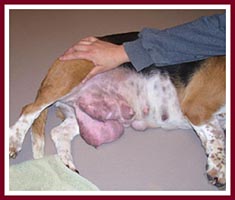 Dogs must be handled as carefully as
practicable, and in a humane manner that does not cause physical harm or
unnecessary injury. Dogs must be handled as carefully as
practicable, and in a humane manner that does not cause physical harm or
unnecessary injury.
A caretaker, or an individual acting under a
caretaker’s oral or written instructions, must perform daily body,
mobility and behavior checks on each dog.
A dog with a communicable disease must be separated from
other susceptible animals to minimize the risk of disease transmission to those
animals.
Dogs must be groomed as necessary to prevent abnormal
matted hair and overgrown nails, and to allow freedom of movement and normal
bodily functions.
A veterinarian must examine each dog as often as
necessary to ensure adequate health care.
Sick, diseased or injured dogs must receive timely
veterinary care or must be euthanized in a legal and humane manner.
DATCP may, by written notice, require a license holder
to submit a dog for veterinary examination if a DATCP inspection indicates that
the dog is ill, injured or neglected.
|
| |
Top
|
| |
 Dog Care, General: Housing and Transportation Dog Care, General: Housing and Transportation
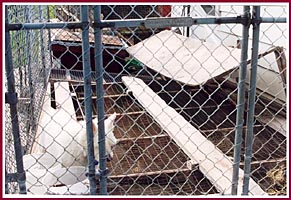 Housing
and transportation: Dogs must be kept in facilities that comply with this
rule (see below), and transported in compliance with this rule (see below). The
facility standards do not apply to a facility used only to breed, raise and
sell dogs for purposes of scientific research, provided that all of the
following apply: Housing
and transportation: Dogs must be kept in facilities that comply with this
rule (see below), and transported in compliance with this rule (see below). The
facility standards do not apply to a facility used only to breed, raise and
sell dogs for purposes of scientific research, provided that all of the
following apply:
The facility was in existence, and was used only for
that purpose, on the effective date of this rule.
The license holder does not materially expand or
remodel the facility.
-
The dogs are sold from the same facility where they are
bred and raised.
The dogs are sold only to animal care facilities
licensed or registered by USDA and are not resold to any other person.
Dog enclosures in the facility comply with USDA rules
under 9 CFR subchapter A (animal welfare).
|
| |
Top
|
| |
 Dog Care, General: Exercise Dog Care, General: Exercise
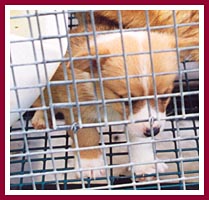 A dog
must have reasonable daily exercise, based on the dog’s breed, size, age
and health condition. Dogs must have daily access to a run or exercise area
where they can achieve a running stride. Repetitive unsupervised physical
activity (such as unsupervised placement on a moving treadmill) that restricts
a dog’s ability to engage in other activity must be avoided except for
good cause. A dog
must have reasonable daily exercise, based on the dog’s breed, size, age
and health condition. Dogs must have daily access to a run or exercise area
where they can achieve a running stride. Repetitive unsupervised physical
activity (such as unsupervised placement on a moving treadmill) that restricts
a dog’s ability to engage in other activity must be avoided except for
good cause.
|
| |
Top
|
| |
 Dog Care, General: Dog Grouping and Separation Dog Care, General: Dog Grouping and Separation
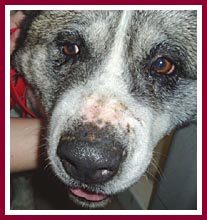 Dogs must be separated,
as necessary, into compatible groups. Dogs must be separated,
as necessary, into compatible groups.
Females in season (estrus) may not be kept in the same
un-separated enclosure with sexually intact males, except for breeding
purposes.
-
Dogs exhibiting potentially harmful aggressive behavior
must be separated from other dogs.
Puppies under 4 months old may not be kept in the same
un-separated enclosure with adult dogs other than their dam or foster dam,
unless under direct supervision.
|
| |
Top
|
| |
 Dog Care, General: Behavior and Socialization Dog Care, General: Behavior and Socialization
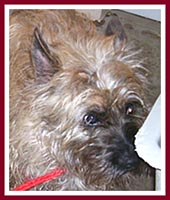 All dogs must
have daily, full-body physical contact with other compatible dogs, except where
such contact must be avoided for good cause. All dogs must
have daily, full-body physical contact with other compatible dogs, except where
such contact must be avoided for good cause.
All dogs must have daily positive human contact, not
limited to feeding time.
All dogs must have safe play objects or other effective
forms of inanimate enrichment in their primary enclosures, except where such
objects or enrichment must be denied for good cause.
Dogs may not be deprived of contact, activity or
enrichment for extended periods, except for good cause.
A license holder must have a written plan for meeting
these requirements, and must instruct employees and agents on the terms of that
plan.
|
| |
Top
|
| |
|
Act 90/ATCP 16 Information:
 Clearing Up the Confusion About WI's New Dog Seller/ Dealer/
Shelter Law Clearing Up the Confusion About WI's New Dog Seller/ Dealer/
Shelter Law 
 ATCP 16: Who Needs a
License, Inspections, and Record-Keeping ATCP 16: Who Needs a
License, Inspections, and Record-Keeping 
 Questions and Answers for Rescues/
Shelters Questions and Answers for Rescues/
Shelters  Dog
Seller and Shelter Form Links Dog
Seller and Shelter Form Links 
 Certificates of Vet.
Inspection/Age of Transfer Certificates of Vet.
Inspection/Age of Transfer  Certificates of Vet.
Inspection FAQ Certificates of Vet.
Inspection FAQ 
 ATCP 16 Standards of Care
(General) ATCP 16 Standards of Care
(General)  ATCP 16 Standards of Care, Indoor
Facilities ATCP 16 Standards of Care, Indoor
Facilities 
 ATCP 16 Standards of Care, Outdoor
Facilities ATCP 16 Standards of Care, Outdoor
Facilities  Transporting
Dogs Transporting
Dogs 
 Act 90/ATCP 16: Facts for Consumers Act 90/ATCP 16: Facts for Consumers 
 ATCP 16 Plain Language
Factsheet (pdf) ATCP 16 Plain Language
Factsheet (pdf)  ATCP
16 Full Formal Language (pdf) ATCP
16 Full Formal Language (pdf) 
 2009 WISCONSIN ACT 90 (pdf) 2009 WISCONSIN ACT 90 (pdf)  DATCP Dog Breeders & Sellers Law web pages DATCP Dog Breeders & Sellers Law web pages
|
| |
|